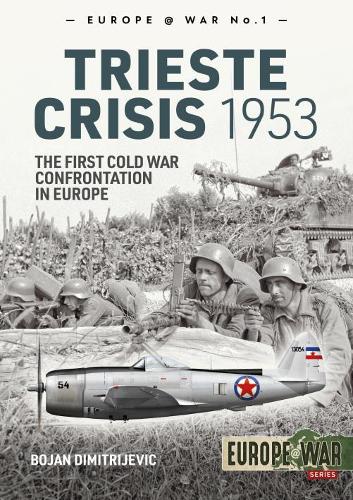
The Trieste Crisis 1953: The First Cold War Confrontation in Europe
(Paperback)
Publishing Details
The Trieste Crisis 1953: The First Cold War Confrontation in Europe
By (Author) Bojan Dimitrijevic
Helion & Company
Helion & Company
4th September 2019
18th July 2019
United Kingdom
Classifications
General
Non Fiction
Cold wars and proxy conflicts
European history
945.39310925
Physical Properties
Paperback
72
Width 210mm, Height 298mm
Description
A detailed account of the Allied, Italian and Yugoslav military presence in the area before, and their build-up during this near-war of October 1953. The city of Trieste stands as a symbol of the Italian-Yugoslav border dispute in the first decade after the Second World War. The problem included a much larger territory which covers the wider area of Trieste: ranging from the Julian Alps in the north to the base of the Istrian peninsula in the south; in the area where the Italians meet the South Slavs. Moreover, after the Second World War it was an area of confrontation for two ideologies: western democracy and communism. It was the place where the Iron Curtain lay between the two worlds for many decades of the Cold War. Often discussed from the socio-economic point of view, military aspects of the Trieste Crisis remain remarkably under-reported and not only in the English language. One of the primary reasons is the relative unavailability of relevant Italian and Yugoslav documentation, but also the general focus on political and ethnic issues instead. The Trieste Crisis focusses on military-related affairs in this part of the world from the 'race to Trieste' of May 1945 until the creation of the Free Territory of Trieste and the culmination of tensions between Italy and former Yugoslavia, in October 1953. By the later date, the crisis had reached a point where it resulted in the largest deployment of military forces from both countries. Correspondingly, this work provides a detailed account of the Allied, Italian and Yugoslav military presence in the area befor, and their build-up during this near-war. Paying special attention to the description of the troops involved, their armament and equipment, the heavy weaponry deployed, and aerial and naval forces, The Trieste Crisis is illustrated by more than 150 photographs most of them never published before colour profiles and maps, and thus closing a gap in the history of the early Cold War in Europe of the mid-20th Century. AUTHOR: Bojan Dimitrijevic is working as a historian and is Deputy Director of the Institute for Contemporary History, Belgrade, Serbia. 123 b/w photos, 17 colour profiles, 4 colour ills, 2 maps, 9 tables
Reviews
"...a truly good book on a series of events that few people know anything about."-- "ModelingMadness.Com"
"Dozens of rare, previously unpublished photos season the study. Twenty-one color plates - eight military vehicles by David Bocquelet, four uniforms by Anderson Subtil, and nine aircraft by Tom Cooper - provide plenty of period project prospects."-- "Cybermodeler"
"Excellent background and military comparison of the Western confrontation with Tito's Yugoslav Army over the city of Trieste from the end of WWII to the mid 1950s."-- "Historical Miniatures Gaming Society"
"These photos certainly give you a good perspective of the events described. I am looking forward to future volumes in Helion's Europe @ War series."-- "IPMS/USA"
Author Bio
Bojan Dimitrijevic is working as a historian and is Deputy Director of the Institute for Contemporary History, Belgrade, Serbia. Educated at the Universities of Belgrade and Novi Sad, CEU Budapest and the University of Bradford, he has also worked as the custodian of the Yugoslav Aviation Museum. During the period 2003-2009, Dimitrijevic served as advisor to the Minister of Defence, the Minister of Foreign Affairs, the President of Serbia, and as Assistant to the Minister of Defence. He has published over 50 different books and more than 100 scientific articles in Serbia and abroad. His professional interest is in the military history of the former Yugoslavia and Balkans in World War Two, the Cold War as well as wars in the 1990s. This is his first instalment for Helion.
